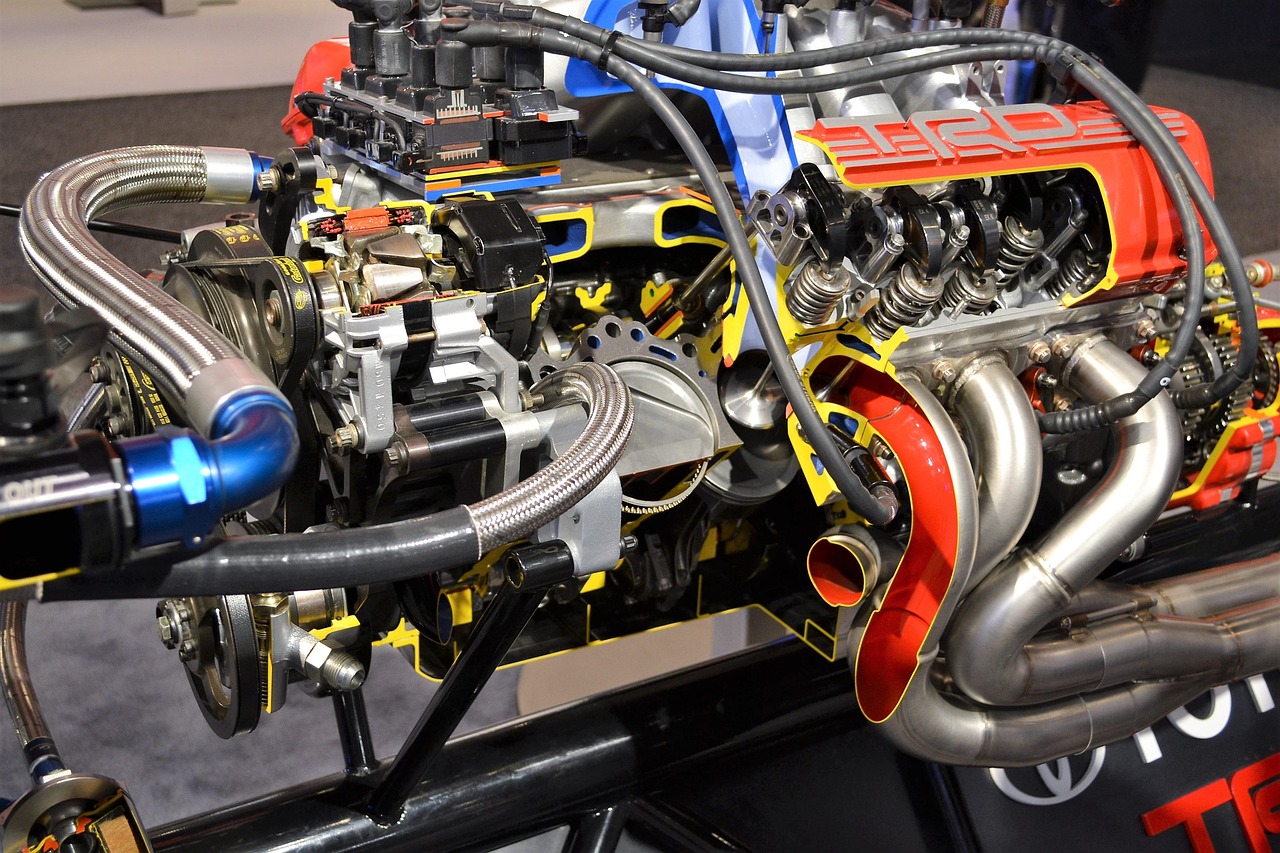Choosing the right BS6 engine oil is critical for longevity, performance, and emission compliance. Learn about viscosity grades, synthetic vs mineral oils, additives, and top tips to pick the best engine oil for your BS6 vehicle.

Since India adopted the BS6 (Bharat Stage 6) emission norms, vehicle engines and their lubrication needs have become more demanding. BS6 oil now plays a pivotal role in maintaining engine health, reducing emissions, and ensuring peak performance. In this guide, we’ll dive deep into everything about BS6 oil: what it is, why it’s needed, how to choose the right one, and best practices for usage.

What Is BS6 Oil & Why It Matters
Definition & Standards
BS6 (or BSVI) is the Indian emission standard, equivalent to Euro 6 in many respects. It requires vehicles to emit lower levels of NOₓ (nitrogen oxides), particulate matter (PM), hydrocarbons, and carbon monoxide. Engine oil for BS6 engines must meet more stringent requirements to protect components like catalytic converters, diesel particulate filters (DPFs), exhaust gas recirculation (EGR) systems, and sensors.
Why the Change from BS4 → BS6 Needs Better Engine Oil
- Higher operating temperature: BS6 engines often run hotter due to stricter fuel injection and after-treatment systems. This elevates thermal stress on engine oil.
- After-treatment compatibility: Phosphorus, sulfur, and ash content in engine oil must be controlled. These elements can poison catalytic converters or clog filters.
3. Tighter tolerances & oil film requirements: To maintain emission control devices and keep combustion efficient, oil must keep tight tolerances and retain its film strength under higher load.
Key Requirements for BS6 Oil
Low sulphated ash, phosphorus, and sulfur (often termed “Low SAPS” oils).
High oxidative and thermal stability.
Proper viscosity at startup and under heat.
Good shear stability so the oil doesn’t thin out under high pressure.
Excellent anti-wear and detergents to keep engine clean.
Synthetic vs Mineral vs Semi-Synthetic Oils
Mineral Oils
Extracted naturally, refined for basic lubrication. Cheaper, but less resistant to high temperatures, have poorer shear stability, and degrade faster compared to synthetics. Mineral oils are less ideal for many BS6 engines unless used under mild load & climate.
Synthetic Oils
Lab-engineered, have superior properties: better flow at low temps, more stable at high temps, better oxidative resistance, lower volatility, better protection for emission control systems. Synthetic BS6 engine oils are recommended for high performance, long service intervals, and environments with large temperature swings.
Semi-Synthetic (or Blended)
Mixture of both. Offers moderate improvement over mineral oils, however may not match synthetics in extreme conditions. A good middle ground if budget is constrained but you still want some performance boost.
Additives & Their Importance in BS6 Engine Oil
Engine oil isn’t just “oil.” Additives make a big difference. For BS6 oil, the correct blend of additives ensures better protection, longevity, and emission compliance.
Detergents & Dispersants
Keep engine clean by removing soot, sludge, combustion by-products. Particularly important in BS6 diesel engines with DPFs.
Anti-Wear Agents / EP (Extreme Pressure) Additives
Protect moving parts (camshaft, bearings, lifters) during high pressure and high load conditions.
Viscosity Index Improvers
Help oil retain optimal viscosity across cold and hot conditions.
Antioxidants & Thermal Stability Enhancers
Prevent oil breakdown at high temperature. Less oil oxidation means less formation of acidic byproducts and less damage to emission control devices.
Pour-Point Depressants
Aid cold starting by making oil flow better at low temperatures.
Friction Modifiers
Help reduce friction between moving parts — improves fuel efficiency & reduces wear.
Choosing the Right BS6 Engine Oil: Factors to Consider
Manufacturer’s Spec / OEM Recommendation
- Always begin with what the vehicle manufacturer recommends. Using oil that isn’t approved may void warranty or damage emission systems.
- Viscosity Grade Suitable for Climate & Load
Hot climates may need thicker oil to avoid thinning at high temperatures; in cold climates, thinner “W” rating helps starting.
- Type of Oil (Synthetic / Mineral / Semi-Synthetic)
Based on cost, performance need, expected service interval. For long intervals or higher performance, synthetic is advisable.
- Low SAPS / High Cleanliness Properties
If your BS6 vehicle has after-treatment systems like DPF, SCR, EGR, then oil with low sulphated ash, phosphorus, and sulfur is essential.
- Fuel Quality & Driving Conditions
If fuel has impurities, or driving is stop-start or involves towing, then oil with stronger detergency and anti-wear features is better.
- Oil Change Interval & Maintenance
Even best oil becomes degraded over time. Monitoring oil health (colour, viscosity, smell) and following service schedule is critical.
Trends in BS6 Engine Oil in 2025
Backward Compatibility: Manufacturers are marketing BS6 engine oils that can be safely used in older (BS4 or even older) engines, offering better cleanliness and performance.
Extended Drain Intervals with Monitoring: With synthetic oils, many users are moving to longer oil change cycles, but only when oil health is monitored (via oil analysis).
Eco-friendly Formulations: Oils with lower environmental impact both in production and disposal, better biodegradability, and reduced hazardous constituents.
Smart Additives: Enhanced detergents that reduce soot build up more effectively, friction modifiers tuned for fuel economy, antioxidants resisting thermal breakdown, etc.
Common Mistakes & How to Avoid Them
Mistake Why It’s Harmful How to Avoid
| Using oil not meeting BS6-compatible specs | Could damage catalytic converter, DPF, or emission sensors
| Check label: API (American Petroleum Institute), ACEA, IS / BIS standards, OEM approvals |
| Ignoring viscosity during hot weather | Oil may thin out, lose protective film | Use higher “hot” viscosity rating if regularly driving in high temps |
| Overlooking additives | Without proper detergents you’ll get sludge, deposits, compromised emission systems | Choose oils with good reputation, test certifications, read labels |
| Waiting too long for oil change | Oil degrades, fuel efficiency drops, emission compliance suffers Follow service schedule | check oil condition, possibly use oil monitoring tools |
How to Check if Your Engine Oil Is Truly BS6-Compatible
Check for official certifications on oil label: look for API (SN, SP), ACEA, JASO (for bikes).
OEM approvals: Some vehicle makers approve specific oil brands/types.
Look for “Low SAPS” or “BS6 / BSVI compliant” labeling.
Read product technical data sheet (TDS) / spec sheet: check sulphated ash %, phosphorus, sulphur content, viscosity vs temperature, etc.
Check reviews / lab reports if possible (third party testing).
Top Tips for Maintaining Engine Health with BS6 Engine Oil
Always use correct oil quantity & grade as per the manual.
Replace oil filter when changing oil. A clogged filter reduces oil flow, stresses engine.
Avoid mixing oils of different types unnecessarily. If you must, mix similar viscosity and similar base (synthetic with synthetic, etc.).
Monitor oil level frequently. Low oil kills engine faster than poor quality oil sometimes.
Warm up engine gently, avoid high revs immediately after cold start.
Use high quality fuel & ensure fuel system is well maintained (injectors, filters) to reduce impurities entering oil.
Who Should Invest in Premium BS6 Engine Oil
Frequent highway users, or those driving in high-temperature regions.
Owners of premium / performance vehicles or engines with turbocharging / direct injection.
Those who retain vehicles long term and care about resale value.
Users with emission control devices (DPF, SCR etc.) — poor oil can lead to expensive repairs or failure.
Conclusion
The transition to BS6 engine oil is more than just a regulatory step — it reflects the heightened demands of modern engines in terms of performance, emission control, and durability. Choosing the right BS6 engine oil means balancing manufacturer’s specifications, climate & driving conditions, oil type, and additives. If you invest properly, you’ll get better fuel economy, cleaner exhaust, less engine wear, and overall higher satisfaction from your vehicle.
Disclaimer
The content provided here is for educational and informational purposes only. It is not intended as professional, mechanical, or legal advice. Always consult your vehicle manufacturer’s manual or a certified mechanic when selecting engine oil. The author assumes no liability for any damage, harm, or loss that may result from using or applying information in this post.
also read :-
Decoding OBD Code P0402: A Complete Guide to Excessive EGR Flow
